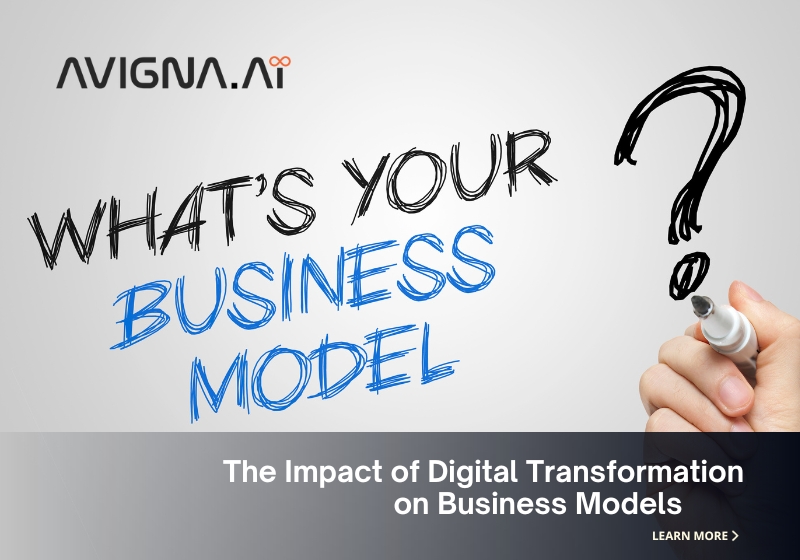The Impact of Digital Transformation on Business Models
Envision yourself in a world where technology is the pulse of every company, an engine of change shaping the core of enterprise efforts. It is not a fairy tale of tomorrow but a product of the tireless current and digital transformation.
This revolution’s leading force comprises entrepreneurs and startup enthusiasts operating in a rapidly changing ecosystem.
Digital Transformation: A Catalyst for Change
Digital transformation goes beyond simple technological improvements. It is a process of digitally transforming all aspects of a business and completely restoring its value proposition and operations.
It is also a change of culture. Organizations must always be ready to question the norm, be willing to try new things and get used to failures. This digital approach is no longer an option for entrepreneurs and startups but a survival necessity.
The impact of digital transformation is evident in the statistics. According to a 2022 Statista report, it is expected that global digital transformation spending will hit around 2.3 trillion U.S. dollars by 2023. This highlights the huge shift in the investment focus towards digital projects.
Furthermore, a McKinsey report indicates that firms practicing digital transformations are 23% more profitable than their competitors. These figures underscore the importance of e-technology in the modern world, which is the main gate to business achievement.
Artificial intelligence, IoT, blockchain, and cloud computing are no longer used as mere tools. They are the base upon which modern-day business strategies are built. It enables businesses to develop, enter into global markets, and provide solutions that were unimaginable a few years ago.
Emerging Business Models in the Digital Age
1. Subscription-Based Models:
It has revolutionized software, entertainment, and other industries, made steady income, and created loyal customers. In this case, entrepreneurs need to deliver continuous value to retain customers. Analytics are essential in analyzing customer tastes and preferences to deliver custom experiences.
For instance, it is used by streaming services like Netflix and Spotify to enhance user engagement by recommending content.
Takeaway: Continuously innovate and focus on subscriber personalization.
2. Platform-Based Models:
Value is created through network effects that platforms connect buyers and sellers. Examples include Uber, Airbnb, and Shopify, which show linking buyers and sellers can convert the industry. Entrepreneurs should understand that a reliable digital infrastructure is necessary for a high level of certainty.
Takeaway: Embrace technology that improves connections and user interaction.
3. Freemium Models:
Offering essential services for free and charging for advanced features can quickly build a large user base. This model works well in gaining a large user base quickly. The challenge is balancing the free and premium offerings to ensure a compelling value proposition.
Takeaway: The right blend of free and paid offers is an indispensable factor in conversion and retention.
4. Data-Driven Models:
Data can serve as one of the essential assets in the present age of digital media. Entrepreneurs should consider data analytics as a number one priority to assist them in making informed predictions at all times. It aims to provide personalized marketing, enhanced customer support, and the development of innovative products.
Takeaway: Strategic and customer-oriented approaches in data management.
5. Ecosystem Models:
Companies like Apple and Amazon have developed an integrated ecosystem where various products and services give a hassle-free customer experience. This approach allows startups to facilitate the customers with complementary products and customer care loyalty, thereby enhancing revenue potential.
Takeaway: An ecosystem could generate a valuable uniqueness for customers.
6. Sustainability-Driven Models:
Sustainable businesses are becoming increasingly popular as environmental issues get more attention. Such activities include using renewable energy, practicing a circular economy, and developing environment-friendly products.
Takeaway: Sustainability integration improves image and attracts environmentally conscious consumers.
Building a Sustainable IoT Ecosystem- Strategies and Solutions
Adapting to Technological Evolution
Learning from one’s errors and fostering innovative principles are important aspects of entrepreneurship. Adapting to the digital world is a continued process by keeping specific goals in mind for success.
Additionally, businesses must prioritize customer experience, as digital-savvy consumers expect seamless and personalized interactions at all points. Keeping an up-to-date information on the technological advancements and market trends is crucial. It requires a deep understanding of customer needs and preferences by utilizing data analytics.
For example, partnering with AI or cloud computing providers can bring advanced technologies and innovative capabilities.
Also Read: What is the difference between IoT and IIoT?
Challenges and Solutions in Digital Adoption
Adapting to digital transformation involves many challenges but provides ways to find innovative solutions. Let us look at some crucial barriers and ways of tackling them.
Challenge: Change Resistance
Humans are usually reluctant to change, significantly when it disturbs their routine. Opposition might provide significant obstacles in the way of the digital transition.
Solution: Creating a culture of adaptability
The process starts with a culture that appreciates adaptation and learning. Train employees to understand through workshops and discussions the advantages of digitalization. Once individuals are aware of the change’s explanation, resistance could be reduced.
Challenge: Security issues in the digital environment
Issues concerning data breaches and violations of privacy might limit the adoption of new technologies.
Solution: Cybersecurity
Enforce tight security measures and train your employees on cybersecurity principles. Update your security frequently and buy sound security systems to keep secret information from unauthorized access.
Challenge: Budget Constraints
Digital technology investments are difficult for small businesses and startups as financial limitations constrain them.
Solution: Cost-effective tools
Use cost-effective or even free digital tools with scalability. Some cost-effective solutions comprise cloud-based services where businesses need to pay only for the resources they use.
Challenge: Pace Keeping with Technology
It is difficult to keep up with the fast technological advancements due to a lack of up-to-date knowledge.
Solution: Foster a culture of continuous learning and collaboration
Attend industry conferences and webinars to remain informed about the latest trends and technologies.
Enterprises may effectively navigate the digital transformation path by tackling these obstacles, paving the way to open up fresh avenues for development.
Conclusion
The digital transformation has significantly impacted business models in today’s rapidly changing world. It has brought numerous opportunities for businesses to innovate and grow while posing challenges that require adaptation and agility.
It has enabled firms to serve a large audience, improve efficiency, and save costs. For businesses to remain competitive, they must always be in touch with the ever-changing technological trends. Adopting digital transformation could result in more prolonged success and development for businesses of all sizes.
At Avigna, we empower businesses to leverage the potential of connected technologies. Email us at queries@avigna.ai to learn how to transform your business with cutting-edge digital technologies.



